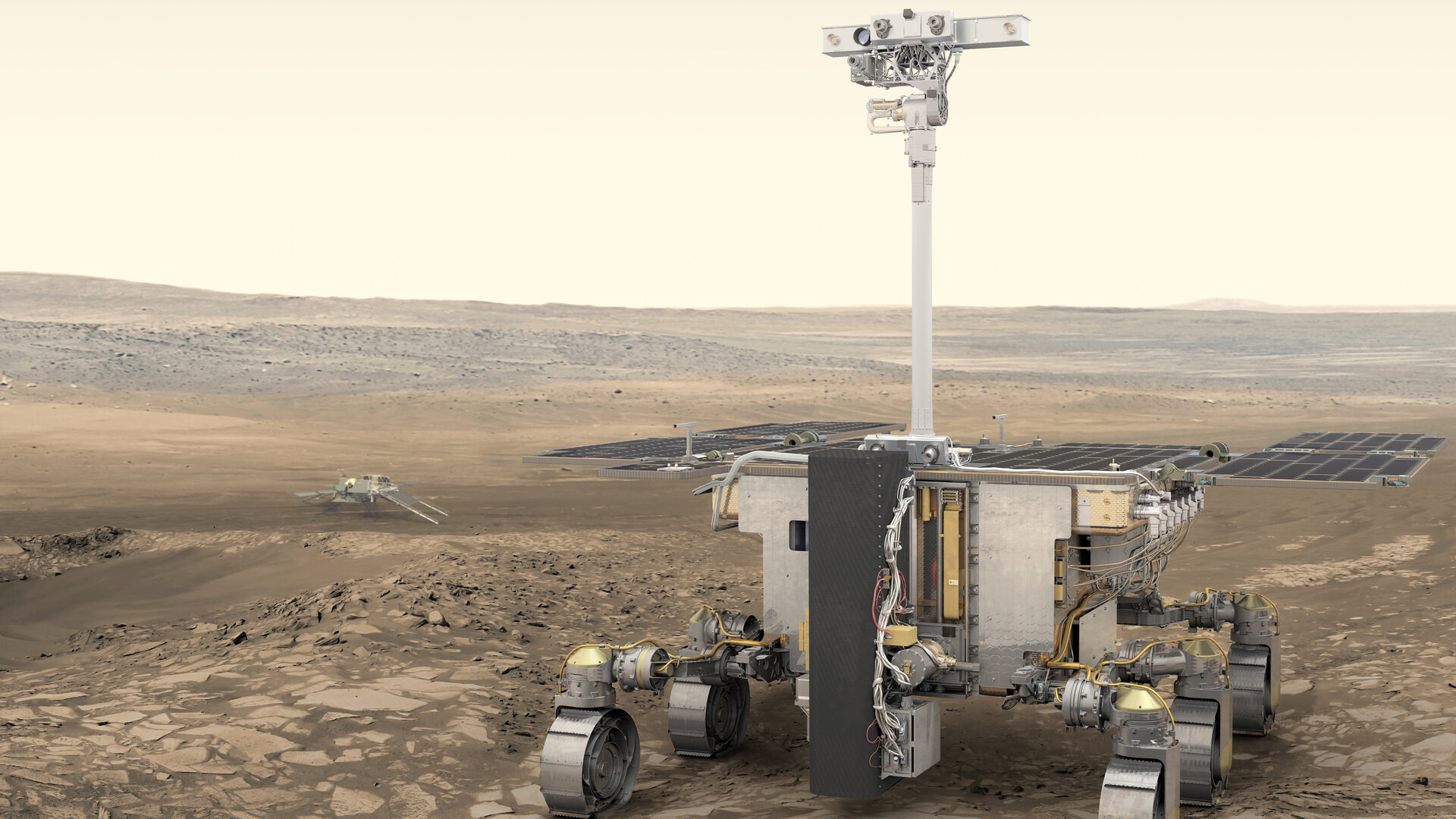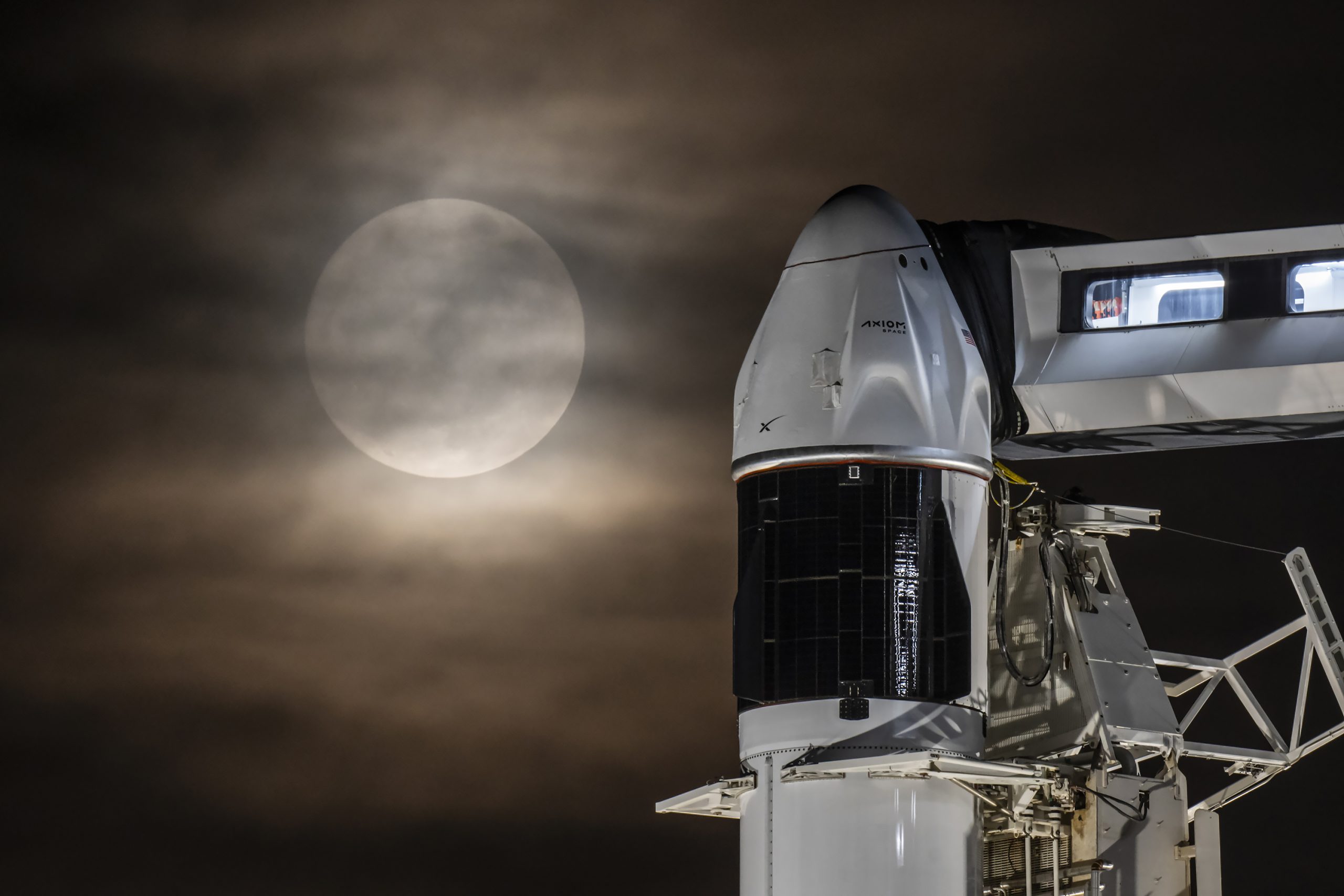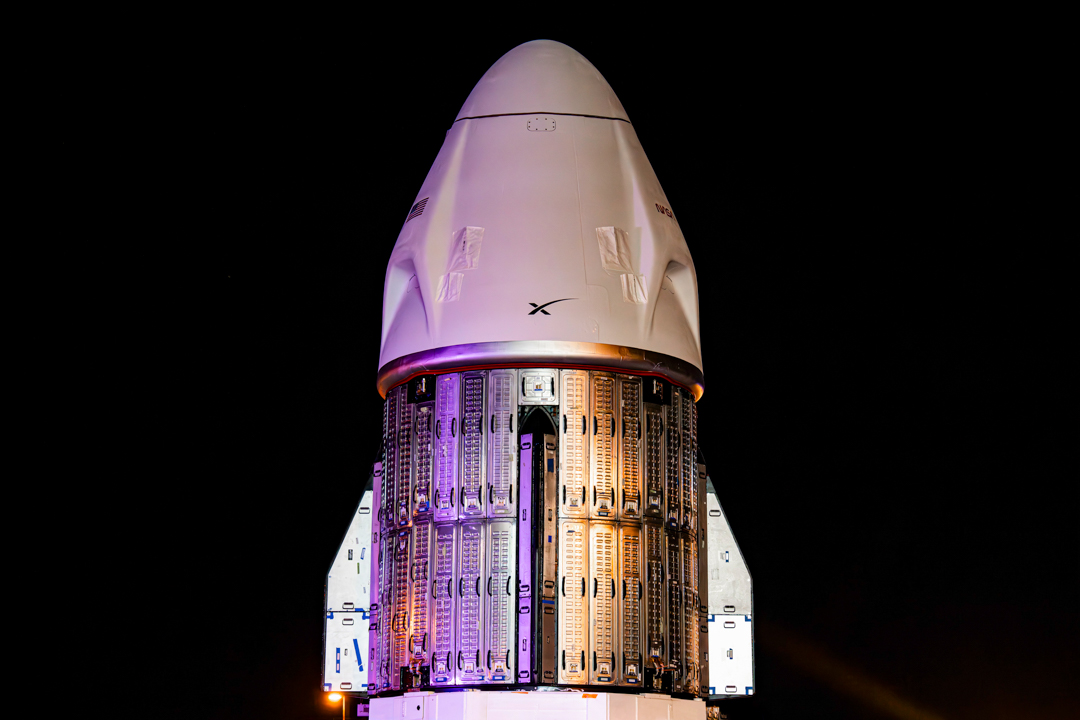

Space
Mars exploration in focus as Europe prepares ExoMars Rover for search of life
2020 may be the year humanity takes its biggest step toward finding evidence of life beyond Earth. NASA and the European Space Agency (ESA) are each working on its own rover that will roam Mars’s surface in search of life.
The ExoMars mission is Europe’s first Mars rover. Named after British DNA pioneer Rosalind Franklin, the golf cart-sized robot is approximately one-third the size of NASA’s planned Mars 2020 rover and will look for signs that life might have existed on Mars.
Both rovers will act as remote scientists, beaming back a wealth of data and images to Earth.
Mars 2020 will collect Martian samples for eventual return to Earth sometime in the future, while ExoMars will use its unique drill to burrow below the surface. Here, the rover will find pristine samples that were shielded from the harsh radiation bombarding Mars’s surface. Scientists are hopeful that below the surface is where we could find our first evidence of life.
A Rover’s Purpose
Mars is a hostile place. Because its atmosphere is much thinner than Earth’s, life as we know it would have a difficult time surviving on the surface.
Billions of years ago, the surface of Mars was probably quite similar to that of Earth. However, that changed when Mars lost its magnetic field, which stripped its atmosphere, and exposed its surface to intense radiation. All of which made survival above ground incredibly challenging.
Historically, Mars missions have searched for signs of life on the planet’s surface, usually at places where there are signs of ancient water. That’s because this is typically where we find life on Earth.
But since we haven’t found life on the planet’s surface yet, mission scientists propose we need to dig deeper. There may be some microbial Martians underground.
The ExoMars rover (and accompanying lander) are a follow-on to ESA’s ExoMars Orbiter mission which reached Mars in 2016. That initial mission consisted of two parts: the Trace Gas Orbiter (TGO) and the Schiaparelli landing demonstrator.
Landing on Mars
TGO made it to Mars and is doing great, however, Schiaparelli didn’t fare so well — the lander crashed during its descent to the Martian surface.
Landing a probe on Mars is not easy. To safely navigate the tenuous Martian atmosphere requires a combination of sophisticated landing gear, including heat shields, retrorockets, and even giant, inflatable airbags.
Despite the crash landing, Schiaparelli achieved its goal as a technology demonstrator. It also showed that the team needed to revamp the landing system before the rover launches. But, with less than a year till liftoff, the rover team is struggling with an established piece of landing architecture: parachutes.
In order to slow the rover down, the mission requires multiple parachutes — one 15 meters (49 feet) in diameter and one 35 meters (115 feet).
As the rover begins its descent, atmospheric drag will slow the craft from around 21 000 km/h (13,048 mph) to 1700 km/h (1,056 mph). That’s when the first parachute will deploy. About 20 seconds later, at about 400 km/h (248 mph), the second chute will deploy. Lastly, the braking engines will kick in about 1 km (or half a mile) above the ground, enabling the rover land safely on the Martian surface.
The entire sequence takes just six minutes.
Parachute Troubles
During high-altitude testing conducted earlier this year, the craft’s parachutes ripped as soon as they deployed. ESA engineers made several adjustments, including reinforcing both the parachutes and their storage bags with Teflon to make them deploy easier. The chutes are still tearing.
Now the agency is turning to NASA for help. ESA engineers are teaming up with the folks at the Jet Propulsion Laboratory, to put the enhanced parachutes through months of rigorous testing.
In the meantime, the rover team is putting its hardware through a round of thermal testing. For 18 days it will be subjected to the same harsh temperature conditions experienced on Mars.
The parachutes are expected to finish testing sometime in April 2020; they will then be integrated with the rover and shipped to the launch site in Kazakhstan. However, if any part of the mission misses its deadline, the entire project could be sidelined until the next favorable Mars launch window — in 2022.
Check out Teslarati’s Marketplace! We offer Tesla accessories, including for the Tesla Cybertruck and Tesla Model 3.
News
SpaceX Ax-4 Mission prepares for ISS with new launch date
SpaceX, Axiom Space, and NASA set new launch date for the Ax-4 mission after addressing ISS & rocket concerns.

SpaceX is preparing for a new launch date for the Ax-4 mission to the International Space Station (ISS).
SpaceX, Axiom Space, and NASA addressed recent technical challenges and announced a new launch date of no earlier than Thursday, June 19, for the Ax-4 mission. The delay from June 12 allowed teams to assess repairs to small leaks in the ISS’s Zvezda service module.
NASA and Roscosmos have been monitoring leaks in the Zvezda module’s aft (back) segment for years. However, stable pressure could also result from air flowing across the hatch seal from the central station. As NASA and its partners adapt launch schedules to ensure station safety, adjustments are routine.
“Following the most recent repair, pressure in the transfer tunnel has been stable,” a source noted, suggesting the leaks may be sealed.
“By changing pressure in the transfer tunnel and monitoring over time, teams are evaluating the condition of the transfer tunnel and the hatch seal between the space station and the back of Zvezda,” the source added.
SpaceX has also resolved a liquid oxygen leak found during post-static fire inspections of the Falcon 9 rocket, completing a wet dress rehearsal to confirm readiness. The Ax-4 mission is Axiom Space’s fourth private astronaut trip to the ISS. It will launch from NASA’s Kennedy Space Center in Florida on a Falcon 9 rocket with a new Crew Dragon capsule.
“This is the first flight for this Dragon capsule, and it’s carrying an international crew—a perfect debut. We’ve upgraded storage, propulsion components, and the seat lash design for improved reliability and reuse,” said William Gerstenmaier, SpaceX’s vice president of build and flight reliability.
The Ax-4 mission crew is led by Peggy Whitson, Axiom Space’s director of human spaceflight and former NASA astronaut. The Ax-4 crew includes ISRO astronaut Shubhanshu Shukla as pilot, alongside mission specialists Sławosz Uznański-Wiśniewski from Poland and Tibor Kapu from Hungary. The international team underscores Axiom’s commitment to global collaboration.
The Ax-4 mission will advance scientific research during its ISS stay, supporting Axiom’s goal of building a commercial space station. As teams finalize preparations, the mission’s updated launch date and technical resolutions position it to strengthen private space exploration’s role in advancing space-based innovation.
News
Starlink India launch gains traction with telecom license approval
Starlink just secured its telecom license in India! High-speed satellite internet could go live in 2 months.

Starlink India’s launch cleared a key regulatory hurdle after securing a long-awaited license from the country’s telecom ministry. Starlink’s license approval in India paves the way for commercial operations to begin, marking a significant milestone after a three-year wait.
The Department of Telecommunications granted Starlink a Global Mobile Personal Communication by Satellite (GMPCS) license, enabling it to roll out its high-speed internet service. Local reports hinted that Starlink plans to launch its services within the next two months. Starlink India’s services are expected to be priced at ₹3,000 per month for unlimited data. Starlink service would require a ₹33,000 hardware kit, including a dish and router.
“Starlink is finally ready to enter the Indian market,” sources familiar with the rollout plans confirmed, noting a one-month free trial for new users.
Starlink’s low-Earth orbit satellite network promises low-latency, high-speed internet that is ideal for rural India, border areas, and hilly terrains. With over 7,000 satellites in orbit and millions of global users, Starlink aims to bridge India’s digital divide, especially in areas with limited traditional broadband.
Starlink has forged distribution partnerships with Indian telecom giants Reliance Jio and Bharti Airtel to streamline deployment and retail logistics. However, the company still awaits spectrum allocation and final clearances from India’s space regulator, IN-SPACe, and national security agencies before its full launch, expected before August 2025.
India’s satellite internet market is becoming increasingly competitive, with Starlink joining rivals like OneWeb and Jio Satellite Communications. While Starlink positions itself as a premium offering, its entry has sparked debate among domestic telecom operators over spectrum pricing.
Local reports noted that other players in the industry have raised concerns over the lower regulatory fees proposed for satellite firms compared to terrestrial operators, highlighting tensions in the sector.
Starlink India’s launch represents a transformative step toward expanding internet access in one of the world’s largest markets. Starlink could redefine connectivity for millions in underserved regions by leveraging its advanced satellite technology and strategic partnerships. As the company navigates remaining regulatory steps, its timely rollout could set a new standard for satellite internet in India, intensifying competition and driving innovation in the telecom landscape.
Elon Musk
SpaceX to decommission Dragon spacecraft in response to Pres. Trump war of words with Elon Musk
Elon Musk says SpaceX will decommission Dragon as a result of President Trump’s threat to end his subsidies and government contracts.

SpaceX will decommission its Dragon spacecraft in response to the intense war of words that President Trump and CEO Elon Musk have entered on various social media platforms today.
President Trump and Musk, who was once considered a right-hand man to Trump, have entered a vicious war of words on Thursday. The issues stem from Musk’s disagreement with the “Big Beautiful Bill,” which will increase the U.S. federal deficit, the Tesla and SpaceX frontman says.
How Tesla could benefit from the ‘Big Beautiful Bill’ that axes EV subsidies
The insults and threats have been brutal, as Trump has said he doesn’t know if he’ll respect Musk again, and Musk has even stated that the President would not have won the election in November if it were not for him.
President Trump then said later in the day that:
“The easiest way to save money in our Budget, Billions and Billions of Dollars, is to terminate Elon’s Government Subsidies and Contracts. I was always surprised that Biden didn’t do it!”
Musk’s response was simple: he will decommission the SpaceX capsule responsible for transporting crew and cargo to the International Space Station (ISS): Dragon.
🚨 Elon says Dragon will be decommissioned immediately due to President Trump’s threats to terminate SpaceX’s government contracts https://t.co/XNB0LflZIy
— TESLARATI (@Teslarati) June 5, 2025
Dragon has completed 51 missions, 46 of which have been to the ISS. It is capable of carrying up to 7 passengers to and from Earth’s orbit. It is the only spacecraft that is capable of returning vast amounts of cargo to Earth. It is also the first private spacecraft to take humans to the ISS.
The most notable mission Dragon completed is one of its most recent, as SpaceX brought NASA astronauts Butch Wilmore and Suni Williams back to Earth after being stranded at the ISS by a Boeing Starliner capsule.
SpaceX’s reluctance to participate in federally funded projects may put the government in a strange position. It will look to bring Boeing back in to take a majority of these projects, but there might be some reluctance based on the Starliner mishap with Wilmore and Williams.
SpaceX bails out Boeing and employees are reportedly ‘humiliated’
-

 Elon Musk1 week ago
Elon Musk1 week agoTesla investors will be shocked by Jim Cramer’s latest assessment
-

 News2 weeks ago
News2 weeks agoTesla Robotaxi’s biggest challenge seems to be this one thing
-

 Elon Musk1 day ago
Elon Musk1 day agoElon Musk confirms Grok 4 launch on July 9 with livestream event
-

 News2 weeks ago
News2 weeks agoWatch the first true Tesla Robotaxi intervention by safety monitor
-

 News5 days ago
News5 days agoTesla Model 3 ranks as the safest new car in Europe for 2025, per Euro NCAP tests
-

 Elon Musk2 weeks ago
Elon Musk2 weeks agoA Tesla just delivered itself to a customer autonomously, Elon Musk confirms
-

 Elon Musk2 weeks ago
Elon Musk2 weeks agoxAI welcomes Memphis pollution results, environmental groups push back
-

 Elon Musk2 weeks ago
Elon Musk2 weeks agoElon Musk confirms Tesla Optimus V3 already uses Grok voice AI


















